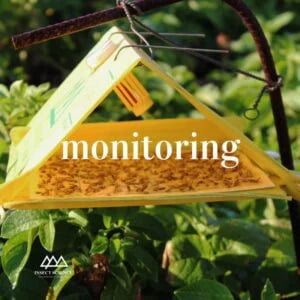
What is yellow sticky trap
The definitions are straightforward and implied in the name. These materials are yellow, sticky, and function as traps. We can expand their use by adding specific activities and purposes. When used for monitoring and as an alternative to pesticides, the trap’s color like yellow attracts insects. If these traps are homemade, they are referred to as homemade yellow sticky traps.
How yellow sticky traps are threats for pests & insects?
Yellow sticky traps are not the threat for insects, generally these traps are the monitoring tools, when farmers set up in the crops field, it helps to understand about the presence of insects. Farmers can identify the pest & insect and decide the doses and uses of insecticide. If farmer wants to use preparing home-made yellow sticky traps as an alternative solution of insect reduction, then a number of village should ve coverage by using the traps. The no traps, coverage, colors, hardness of yellow traps, type of stickiness helps to emphasize for more effective result.
Which Insects Are Caught by Yellow Sticky Traps?
In the field, yellow sticky traps are often used by farmers to reduce insect attacks, although they don’t always target specific pests. Many farmers simply believe these traps will lower pest numbers. I recall several projects that promoted the use of yellow sticky traps on farms, but the guidelines often lacked specific insect targets. As a result, farmers are unsure which pests they’re targeting. Yellow sticky traps are commonly used to monitor and capture pests like aphids, whiteflies, thrips, psyllids, fungus gnats, sharpshooters, and adult leafminers. In seedling production areas, placing 1–2 traps per 50–100 m² can significantly reduce whitefly populations.
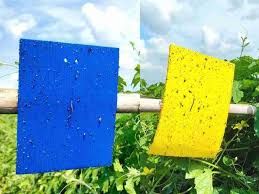
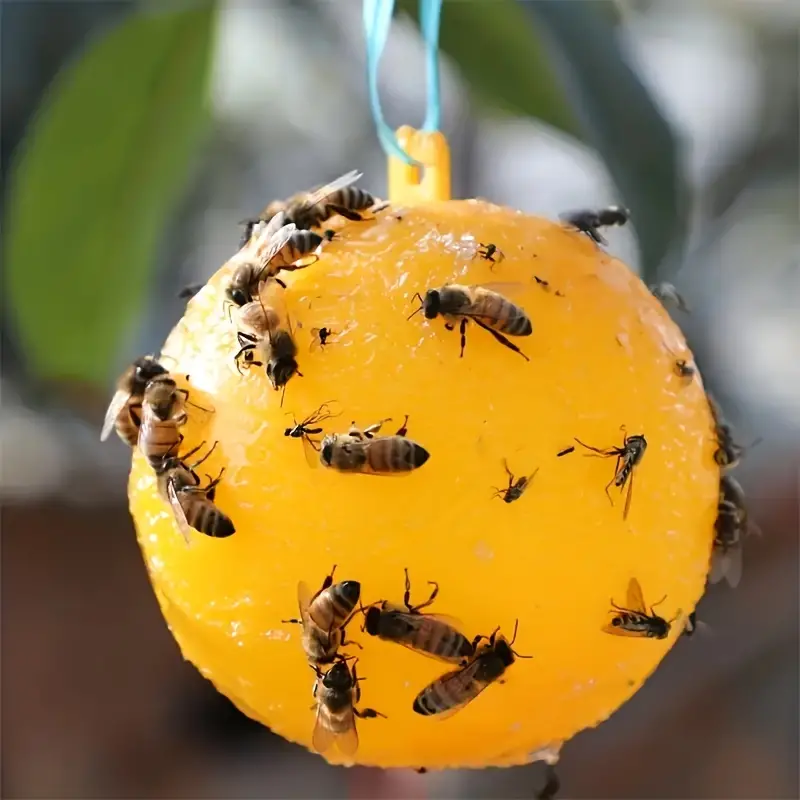
Is yellow sticky works as a trap or monitoring tools?
Sticky traps are widely used as monitoring tools in greenhouses and orchards. By regularly inspecting them, farmers can detect the early presence of potentially harmful insect populations. Yellow sticky traps are particularly effective at attracting adult whiteflies, flower thrips, fungus gnats, and leafminers. Aphids and thrips are especially drawn to yellow. In fact, if you’re wearing bright yellow clothing in areas with a high concentration of aphids or thrips, they may land on you. Some sticky traps are designed to target specific crawling or flying insects, with special placement instructions. Yellow sticky traps serve primarily as monitoring tools but also effectively trap insects.
What Types of Yellow Sticky Traps Are Available in the Market?
Yellow sticky traps can be highly effective in reducing flying insect populations, particularly aphids and jassids. Placing four to six traps per acre has been shown to significantly lower pest numbers. Sticky traps are available in both roll and sheet forms, typically in blue and yellow. Yellow sticky traps are ideal for attracting whiteflies, aphids, moths, leafhoppers, and leaf miners, while blue sticky traps are more effective against thrips.
Materials Needed:
Plywood, hardboard, or cardboard (1.5 ft x 1.0 ft)
Yellow oil paint
Glue or white grease
Bamboo poles
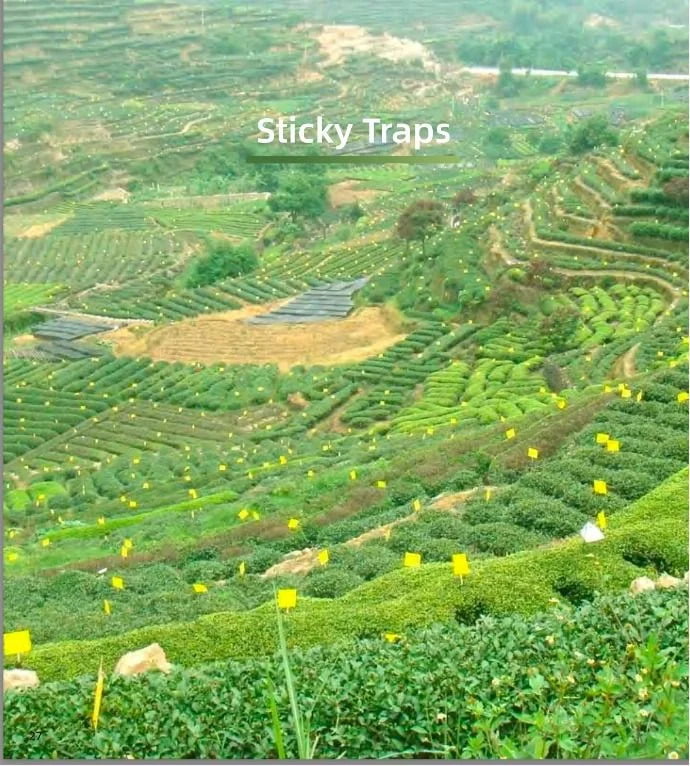
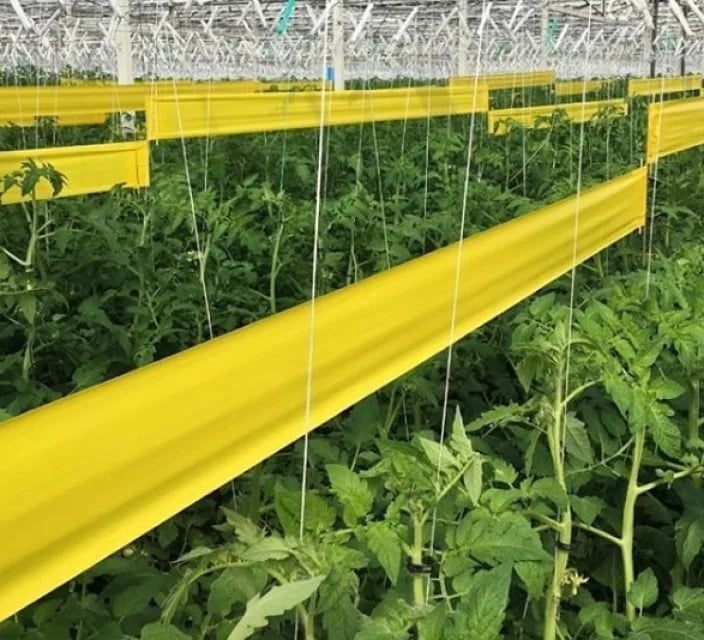
For generations, gardeners have used yellow sticky traps to catch unwanted flying insects. Think back to the yellow fly tape Grandma hung by her fuchsias—yellow is simply irresistible to pests! Indoors, this includes shoreflies, fungus gnats, and whiteflies. While commercial yellow sticky traps are available at most garden centers, you can easily make your own.
Any yellow item will work a paint sample card, yellow index card, or even a yellow Frisbee, cup, or plate. You can also paint a piece of wood, like a stir stick, yellow.
Next, apply a sticky substance that won’t dry out, like heavy engine oil, Vaseline, honey, or a non-drying glue such as Tanglefoot. Coat your yellow object and place it near your houseplants. You’ll be surprised how quickly it traps insects.
Once the trap is full, simply clean it off and reapply the sticky substance, making it reusable. This method fits perfectly within regenerative agriculture practices.
Yellow sticky traps are an effective tool for detecting pest infestations early.
For tall crops like cucumbers, tomatoes, and peppers, place the traps just above the plant tops, adjusting as they grow. For crops with a low canopy, support the traps with canes or wire holders, positioning them no more than 30 cm (12 in.) above the crop. Traps should be removed if they capture a large number of beneficial flying parasites, which can happen when placed among the plants. Keep in mind, glue traps can become ineffective after two weeks, making them costly. Using 1–2 yellow sticky traps per 50–100 m² in farms can effectively capture pests.
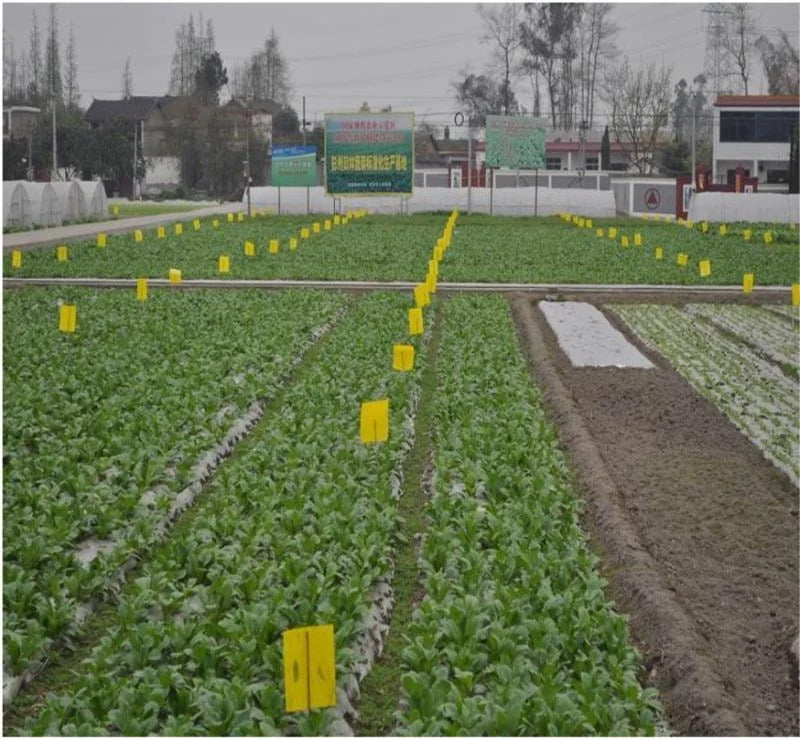
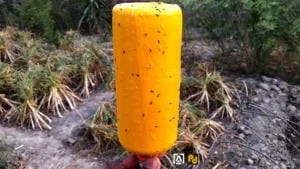
What are the colors of sticky traps?
Sticky Trap Rolls and Sheets
Sticky traps come in blue and yellow varieties. Yellow traps are ideal for attracting pests like whiteflies, aphids, moths, leafhoppers, and leafminers, while blue traps are better suited for thrips.
Yellow vs. Blue Sticky Traps
Blue sticky traps work well for thrips, as they are more attracted to this color. However, it can be challenging to see and count insects on blue traps. Yellow sticky traps attract a broader range of pests and are recommended for most pest control needs.
Drawbacks of Sticky Traps
A significant drawback of sticky mouse traps is their inhumane nature. Once caught, the mouse doesn’t die instantly but remains trapped until it’s either removed or starves. This leaves you with the difficult task of handling a live mouse, potentially causing unnecessary suffering.

Please let me know if you’re looking for a article writer for your weblog. You have some really good articles and I feel I would be a good asset. If you ever want to take some of the load off, I’d love to write some articles for your blog in exchange for a link back to mine. Please blast me an e-mail if interested. Kudos!